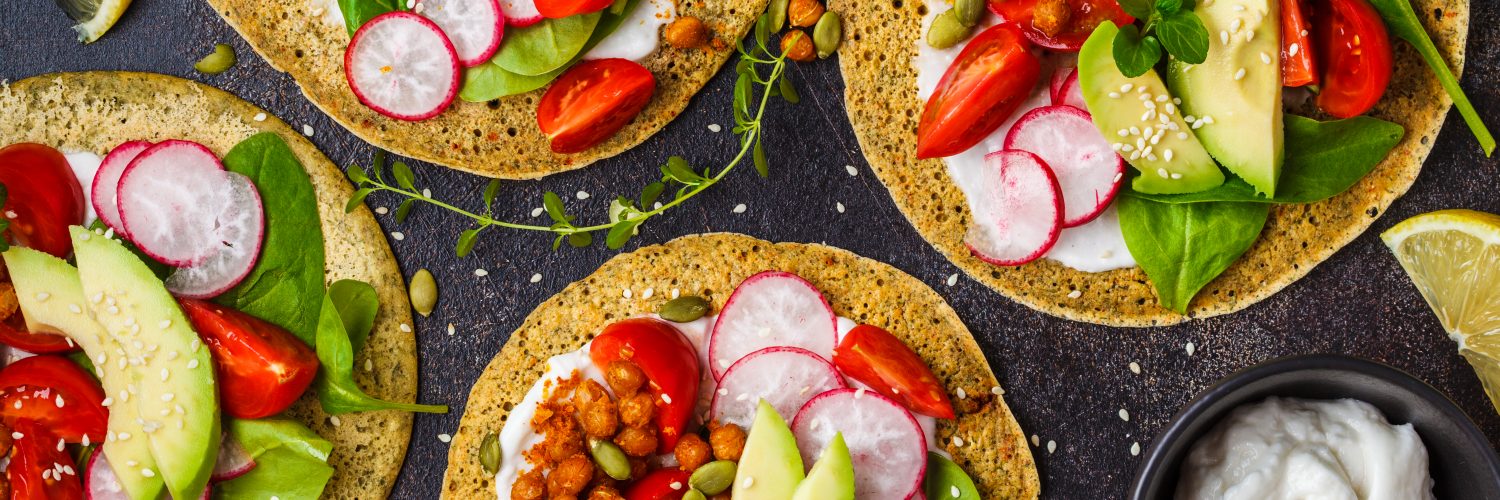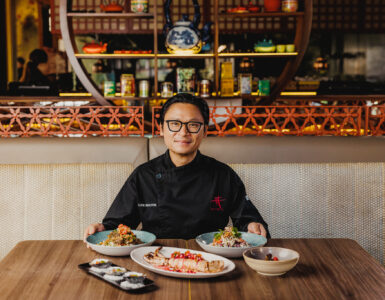We chatted to Sokyo Sous Chef Alex Yu to get his tips for helping plant-based foods go from a supporting role to the star of the show at mealtimes.

No matter if you’re a vegan, vegetarian, pescatarian, flexitarian or downright undecided, many of us are trying to get more vegetables into our lives. As an increasing number of consumers make an effort to limit or banish meat and seafood from their diets, chefs and home cooks alike are learning to celebrate the versatility of vegetables.
Even at Sokyo at The Star Sydney, where the seafood sashimi and wagyu steak have achieved cult-like status, sous chef Alex Yu has seen a significant increase in customers coming in expecting veggie dishes of the same calibre. It helped inspire a dedicated vegetarian menu, which offers meat-free versions of iconic Japanese dishes such as tempura, poke and sushi rolls based around seasonal produce.
Fresh is best
Whether it’s meat, seafood or vegetables they’re working with, the Sokyo team have a cardinal rule – everything has to be fresh and in season. Alex finds that produce that has been picked or sourced at the optimal time needs minimal interference to taste its best. “Because when it’s seasonal, you don’t have to do much. You don’t have to cook it differently and you don’t have to season much because their conditions are at their best.”
Out-of-season produce is often picked before its time and artificially ripened or frozen. If you’re on the hunt for in-season produce to use in your veggie feasting, start at a local greengrocer or farmer’s markets and come armed with a produce calendar to know what will be at its best. When the produce is perfectly ripe, Alex sees very little difference between the treatment of proteins and vegetables. “For example, protein you have to handle carefully and keep at certain temperatures … But the vegetable is exactly the same. You have to find the fresh ingredient, perfect temperature and handle carefully.” Whether it’s protein or plant-based, a light hand lets a good quality ingredient do all the heavy lifting of a dish.

Missing meat?
For reformed carnivores, Alex recommends legumes such as kidney and black beans, eggplant, cauliflower, tofu and especially mushroom as a replacement for meat. “In Asia, mushroom is really good for stock making and a great substitute for a steak or meat,” he says. At home, Alex has also been known to sauté or grill a slab of solid tofu in lieu of a steak. One of his other go-tos is a mix of the two – chopped up mushroom and tofu marinated with sake, mirin and soy sauce, boiled down into a stock and freshened up just prior to serving with additions such as leafy vegetables. Asparagus and cucumber too are personal favourites for building a meat-free dish: “Easy to find and easy to cook,” Alex says.
Alex’s ultimate plant-based meal hails from his homeland Korea. His vegetarian version of bibimbap, a classic dish named for the verb “bibim” (to mix), is a mess of sautéed vegetables on a bed of steamed rice, topped with sesame oil and chilli paste and then mixed up into a nutritious and deeply satisfying feed. At the end of the day, Alex says, if you treat your vegetables right and seek out the best ingredients in season, you’ll never feel like your meat-free dish is lacking in anything.















